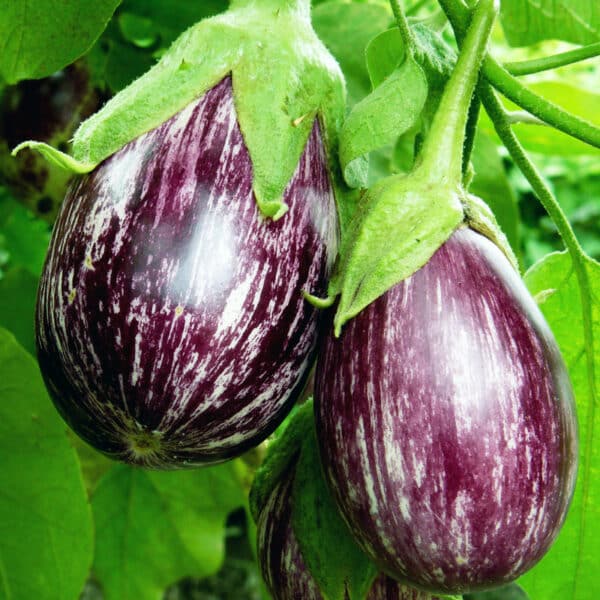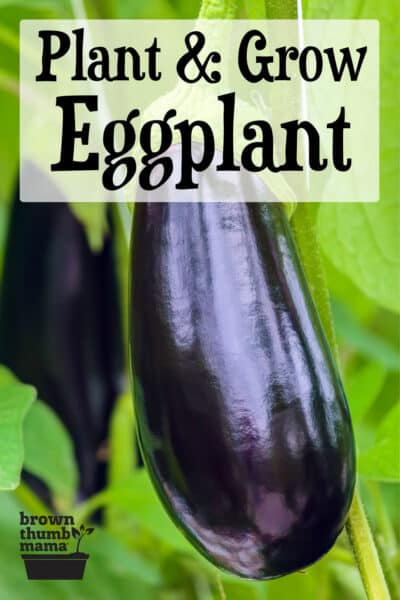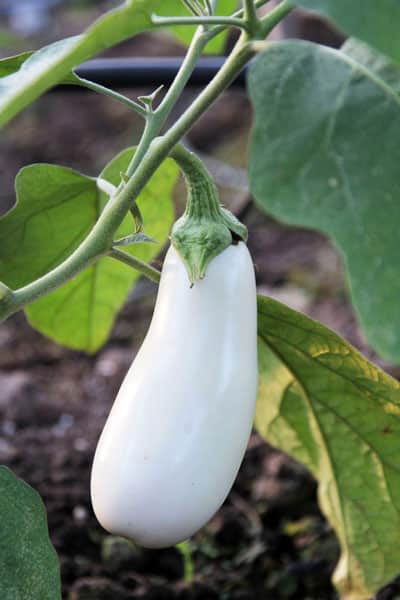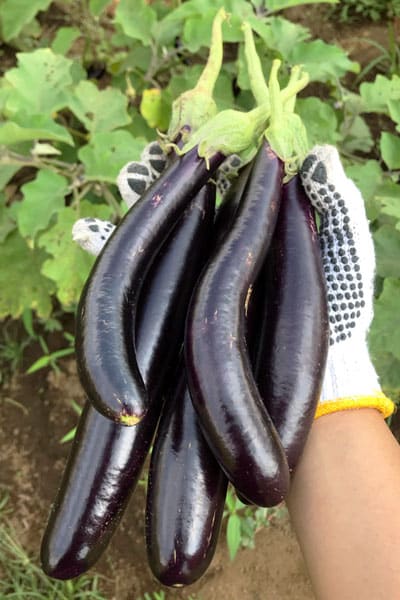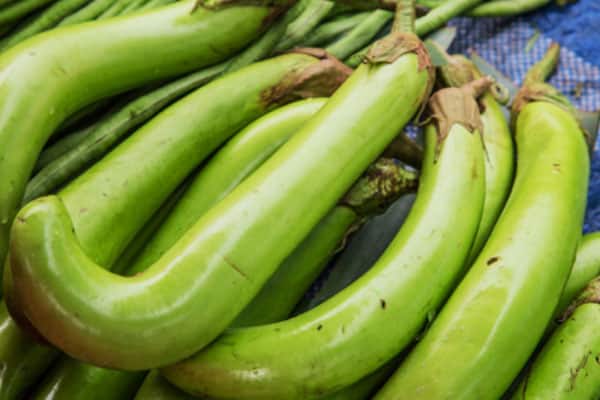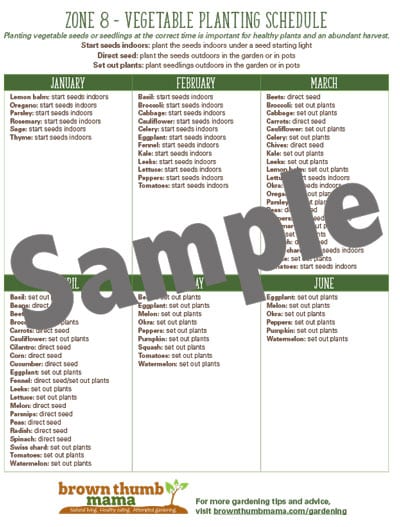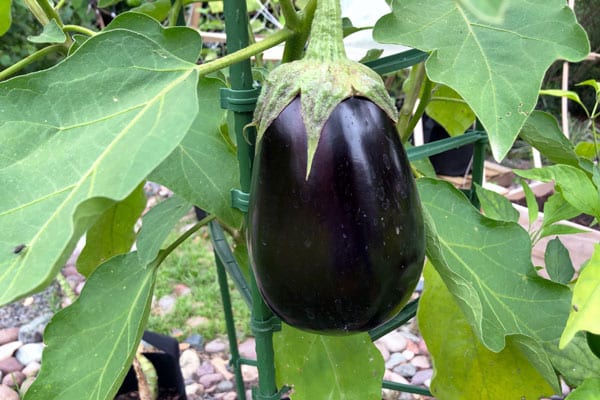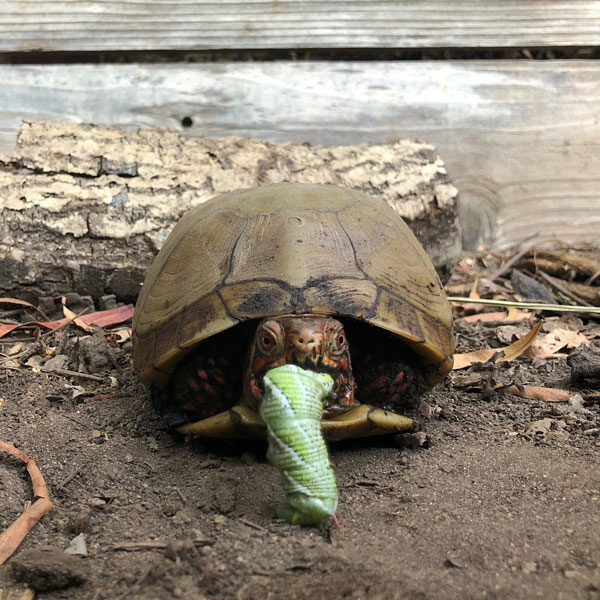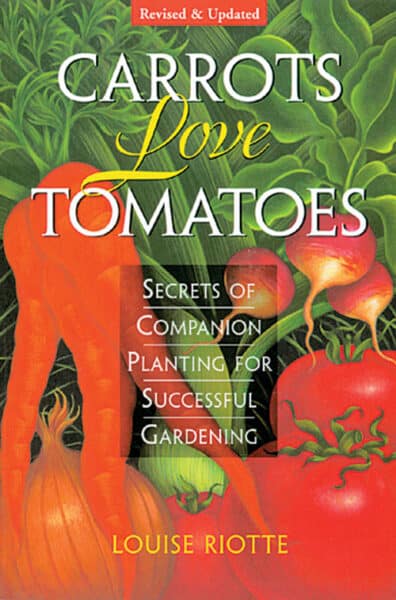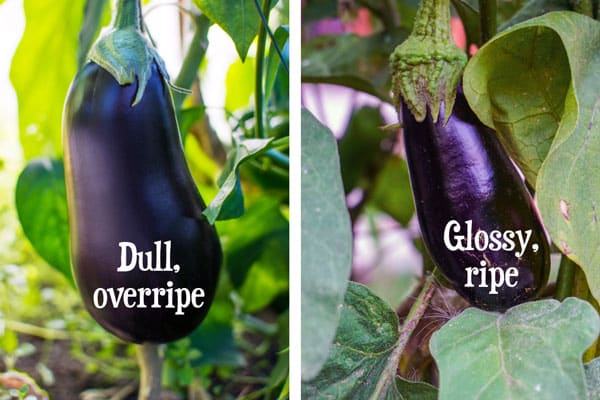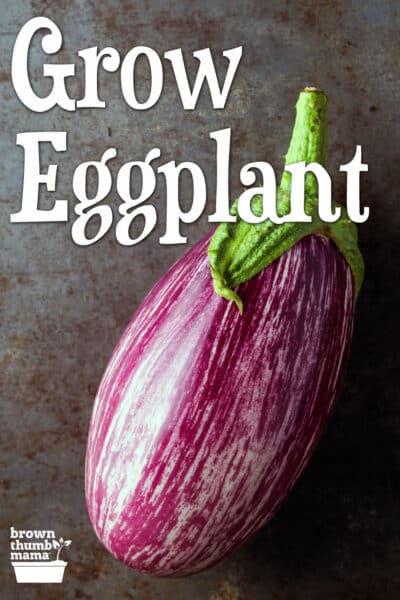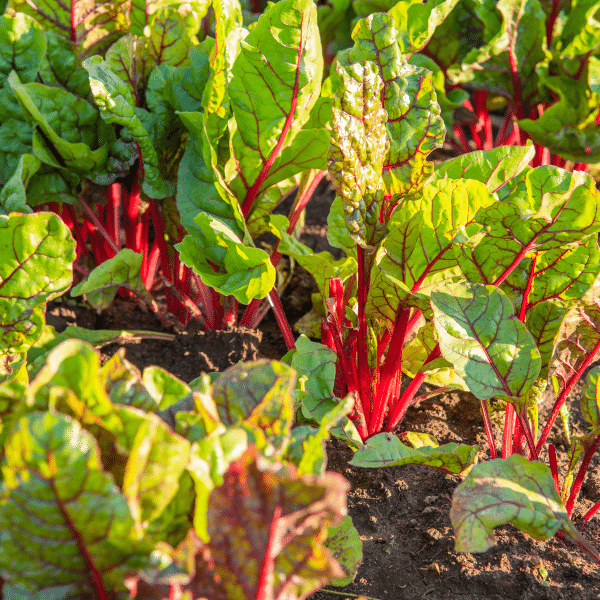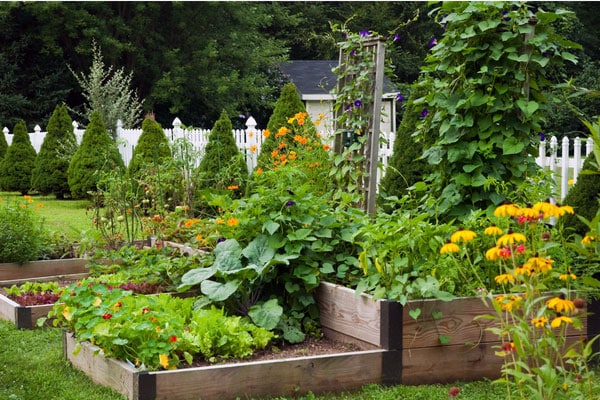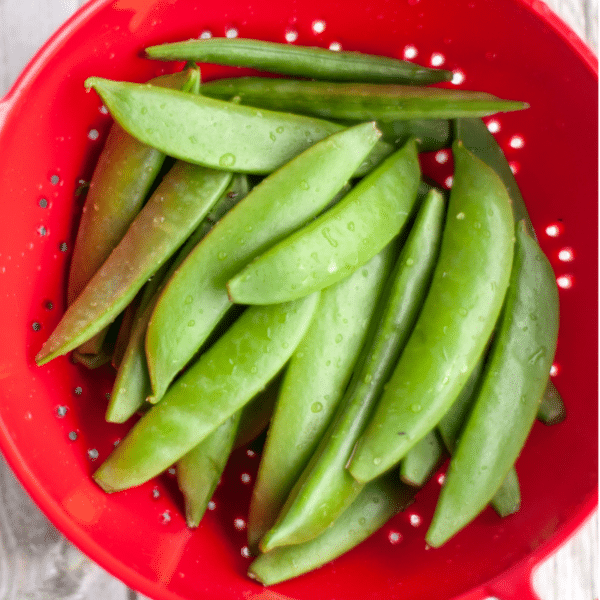This post may include affiliate links.
If you make a purchase, I'll earn a small fee at no extra cost to you.
It’s so easy to grow eggplant in your garden or in containers, and eggplant loves the summer heat. Here’s everything you need to know about planting and growing eggplant. Includes recommended varieties and planting tips.
Eggplant (also called aubergine or brinjal) is easy to grow, and it loves hot weather. It’s colorful and striking in the garden, and you can even grow it in the front yard–I bet nobody will be the wiser.
There are many sizes and colors of eggplant, beyond the purple globes you see at the grocery store. Let’s get out in the garden!
Eggplant Varieties
I had no idea that so many colors and shapes of eggplant existed. We’ve all seen the purple globe type, but there are also long and thin eggplants and smaller, egg shaped eggplants.
And did you know they can be purple, white, green, or even red? Here are a few varieties of eggplant you can start from seed:
Black Beauty: this is the deep purple variety usually seen at the store.
Listada de Gandia: a striking, purple-and-white striped French heirloom variety (see top picture).
Casper White: yep, white eggplants that produce early–in just 70 days.
Pumpkin on a Stick: these orange/red ornamental eggplants are used primarily in flower arrangements.
Nakasagi Long: this Japanese heirloom grows best in a warm, humid climate.
Long Purple Heirloom: a prolific producer, with mild flavor.
Orange Turkish: produces eggplants with orange skin and orange flesh.
Round Mauve: this round eggplant should be picked when it’s the size of a tennis ball.
Long Green Louisiana: just as the name implies–mature fruits are light green and up to 9 inches long.
Ping Tung: another looooong eggplant, up to 18 inches when mature!
Sun, Water, Soil
Eggplants like it hot! Choose an area with at least 8 hours of full sun. If you can plant them on the south side of your yard, they’ll get maximum sun there.
Whether you’re planting seeds or seedlings, eggplant needs fertile, well-drained soil. Mix some homemade compost into the soil when planting. When they start to bloom and set fruit, feed them with an organic fertilizer (I like EB Stone Organic Tomato & Vegetable Food). Fertilize again in late summer, either with compost or organic fertilizer.
Regular water is important–the soil should be moist but not soggy. If your eggplants don’t get enough water, they’ll produce bitter fruit. It’s helpful to mulch the plants with shredded leaves or bark once they’re about 6 inches tall.
Planting & Spacing
If you’re starting eggplant from seed, use a heat mat and homemade seed starting soil to help them along. You’ll want to start the seeds about 10 weeks before your average last frost date (here in Zone 9, that means starting seeds in January/February).
Not in Zone 9? No problem. Get a Vegetable Garden Planting Schedule and you’ll know exactly what to plant each month.
Transfer your eggplant seedlings out in the garden when there’s no danger of frost and when soil temperature is at least 70°F. I usually wait until April just to be sure the days and nights are toasty warm.
Plant your seedlings 18 inches apart–happy eggplants grow into bushes nearly 2 feet tall and 16 inches wide! Stake them shortly after planting, or the weight of the eggplants will cause the plant to fall over. You don’t have to use anything fancy to stake them. I use a straight branch from the privet bush I cut down. (Finally! A use for privet, haha.)
Pests, Diseases, Companion Plants
Thankfully, there aren’t too many bugs that like to munch on eggplant. The ones you’re most likely to encounter are aphids, flea beetles, and hornworms.
Aphids are common, but it’s easy to control them with natural methods. Here are the best ways to get rid of aphids naturally.
Flea beetles chew tiny, circular holes in eggplant leaves and stems. If you have a bad infestation, they can defoliate and kill entire plants. The best defense against flea beetles is to cover the plants with a floating row cover immediately after planting.
If you don’t want to do that, you can also plant radishes nearby as a trap crop. The flea beetles would rather eat radishes than eggplant, and then you can pull and throw away the infected plants (do not compost).
Finally, you may see a hornworm or two on your eggplant. The best way I’ve found to get rid of hornworms is to pick them off by hand and feed them to my turtle.
If that’s not your cup of tea, you can use Bacillus Thuringiensis (BT) spray, which kills hornworms and other caterpillars without harming bees, earthworms, or good bugs. (But don’t feed them to your turtle after you spray.)
Amaranth, or rough pigweed, is a great companion plant for eggplant. What’s companion planting? Well, just like people, some plants get along better than others.
I learned this from Carrots Love Tomatoes: Secrets of Companion Planting for Successful Gardening, which is a must-read for us vegetable gardeners.
Harvesting
Most eggplants are ready to harvest around 90 days after planting–look for fruits with firm, shiny skin. When in doubt, it’s better to harvest them too early.
If you wait too long, the skin will turn dull and sometimes golden. It will have a lot of brown seeds and will taste bitter. See how the eggplant on the left isn’t as glossy or bright? That means it’s overripe.
Cut the stem with sharp pruners (these Felco pruners are amazing). Don’t try to pull the fruit off the plant–it won’t let go, and you’ll damage the plant.
Frequent harvesting will encourage more production, so don’t be shy! Store eggplant in a cool place until you’re ready to eat.
Preserving Eggplant
If you have more eggplants than you can eat (lucky you!) then it’s time to preserve them. Eggplant cannot be safely canned, so your best bet is to freeze it.
Because of its high water content, you’ll want to cook it first. Bake eggplant slices on a greased cookie sheet (350 F for 15-20 mins), then allow to cool and freeze in a zip bag. If your recipes call for eggplant puree, poke holes in the skin with a knife, then roast the whole eggplant at 400 F for 30-45 mins. When cool, scoop out the flesh and freeze.
Don’t feel like cooking and freezing your harvest? Share your bounty with your local food bank! Food banks don’t often get donations of fruits and vegetables, and their clients will welcome the fresh food. You can find your local food bank at FeedingAmerica.org.

